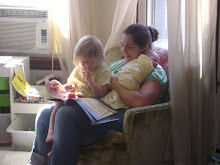 You've loaded your shopping cart with enough goods to get you through the next Ice Age. You've patted yourself on the back for your smart shopping...but what to do with all of this stuff once you get home? And as you make your way through your impressive stockpile, how can you make the most of your leftovers?
You've loaded your shopping cart with enough goods to get you through the next Ice Age. You've patted yourself on the back for your smart shopping...but what to do with all of this stuff once you get home? And as you make your way through your impressive stockpile, how can you make the most of your leftovers?Catching a great sale on pantry goods, meat and produce feels like a victory against the rising cost of food, but it becomes a lost cause if things are stored improperly. We've all done battle with freezer burn. We all have the science experiment in the back of our fridge - you know, the one you're afraid will bite back if you remove it. But fear not - there are plenty of great resources out there to help preserve your findings!
Brick #6 - Store your loot the right way, make your stockpile last!
To begin, you need the right tools. If you have a vacuum sealer, make the most of it! I have not invested in one just yet, but it is a fantastic, and proven, means for keeping food at its freshest. If this is one appliance NOT gathering dust in your closet, here's a short list of basic storage items:
- plastic wrap (Glad press & seal is great if you can splurge, but any basic Saran wrap is fine)
- Heavy duty aluminum foil - don't scrimp here, no thin cheap foil.
- Ziploc freezer bags in quart and gallon size
- airtight containers, several sizes and shapes - I personally prefer the Lock N Lock line - they open and close easily, are spillproof and completely airtight, everything safe, and virtually indestructible. I've found them at Wal Mart, Christmas Tree shops, sometimes Ocean State Job lot. Worth the extra cost. In a pinch, any Rubbermaid, Ziploc or Gladware container will do.
- a dry erase marker, or a Sharpie and masking tape
Let's start in the pantry....
Your dry goods need to be protected as much as your fresh goods. Rice, flour and sugar shouldn't be stored in their original bags, they should be put in airtight containers or canisters. To prevent weevils or other bugs, place a couple of bay leaves in the containers - the flavor won't be affected. If you bought flour in very large quantities, it can actually go in the freezer for a couple of months to extend its shelf life. For very large quantities, Home Depot actually sells small and medium paint buckets with lids that seal very tight, and direct from the store they are certainly clean enough to hold food.
Loaves of bread can be frozen, if you hit a good sale then go ahead and buy 3 or 4 loaves. You will want to leave the bread in its original bag and then put a SECOND bread bag around that. Extra wrapping will seal in the moisture and prevent drying. DO NOT thaw in the microwave, just put a loaf in the fridge with enough time for it to thaw completely.
Pasta that won't be used within a couple of weeks should also be stored out of the original box in a sealed container - this will prevent mold as well as over-drying.
Any canned goods that have been on the shelf for a while should be checked periodically for denting or expanding. Store them out of extreme temperatures, as canned goods that have frozen inside the can are not safe to eat.
Potatoes can be tricky - you want them to be stored AWAY from your onions, in a breathable bag (paper bag, burlap, or plastic with holes). Do NOT put them in the fridge, as they will sweeten. They should be put in a cool, dry place and only kept for a month or two. Onions should also be in a breathable bag and stored in a cool dry location. I read here about using a leg from pantyhose to hang onions - drop one in the toe, tie it off, drop one above that, tie off...etc until you have a onion daisy chain. Neat idea!
On to the freezer...
Freezer burn is not the end of the world, but while the meat is still edible it can be tough, dry and just not as good as fresh-from-the-store. This is where the vacuum sealers REALLY shine, but if you don't have one you can still keep the burn away. Meat should be double wrapped - first in plastic wrap then in foil to seal out moisture. Ziploc freezer bags work equally well, but I would still wrap in plastic wrap first. Clemson University actually has a very comprehensive guide to freezing meat and seafood that I have found VERY useful. Did you know that freezing your meat as quickly as possible actually PREVENTS ice from forming? The water doesn't have time to form the six-sided crystals. I use my chest freezer in the basement as the temperatures are much colder and more consistent than the freezer in the kitchen.
Muffins and quickbreads should also be double wrapped - I individually wrap muffins in plastic wrap and then put several of them in a gallon Ziploc bag so that I don't have to defrost the whole lot of them for one breakfast.
Veggies and fruits are temperamental little things in the freezer. If you don't prepare them properly, the expanded water in the cells will make them mushy once you thaw them. I am not overly ambitious about freezing produce just yet, but for those with the desire - check out the National Center for Home Food Preservation. No joke - they have a complete list of canning, freezing, drying and pickling techniques for a huge variety of foods. Very handy if you find a crazy sale at the market or local farmstand. If you buy your veggies already frozen, just make sure the bag is well sealed after each use - I keep a bunch of twist ties handy just for that purpose. And don't make the mistake of storing them in the door shelves of the freezer - the repeated opening and closing of the door causes enough thaw to create ice in the bag. The only thing I keep on the freezer door are ice packs for the lunch boxes.
Here's where the marker comes in handy. A pile of neatly wrapped packages in the freezer is great, but it would be helpful to know what's inside. Label and date everything you store, not only so you know what you're thawing, but when it was put in there - it's probably not a good idea to cook up that lost chicken thigh if you vaguely remember buying chicken thighs in 2007.
The fridge is where you want to make the most of the plastic storage containers. I actually have a system in my fridge - most of the leftovers are stored on the right side of the fridge with main dishes on the bottom, side dishes on the middle shelf. I use a dry-erase marker to write the contents and the date on the side of the container. And I put the newest leftovers toward the back, so that I'm always using the older stuff first. Leftovers never last more than a week in my house but this system keeps me from serving the same dish twice in a row, and ensures that I don't end up with a new species of animal growing in a dark corner of the fridge.
The FDA has posted that detail how long certain foods can be stored in the fridge. Our friends at Clemson University have also made a great reference tool for storing leftovers - you have to scroll down a bit to get to the timeline grid.
It might seem like a lot of unnecessary work, but if it means holding onto your savings instead of having to replace food because it spoiled, it's well worth it!



















2 comments:
I love this post! Great information, thank you thank you!
Thank you for visiting my blog! My freezer is also full of meats, vegetables, & breads. So much so that my hubby calls me "Freezer Queen." Your link lists were also very helpful!! Thank you.
Post a Comment